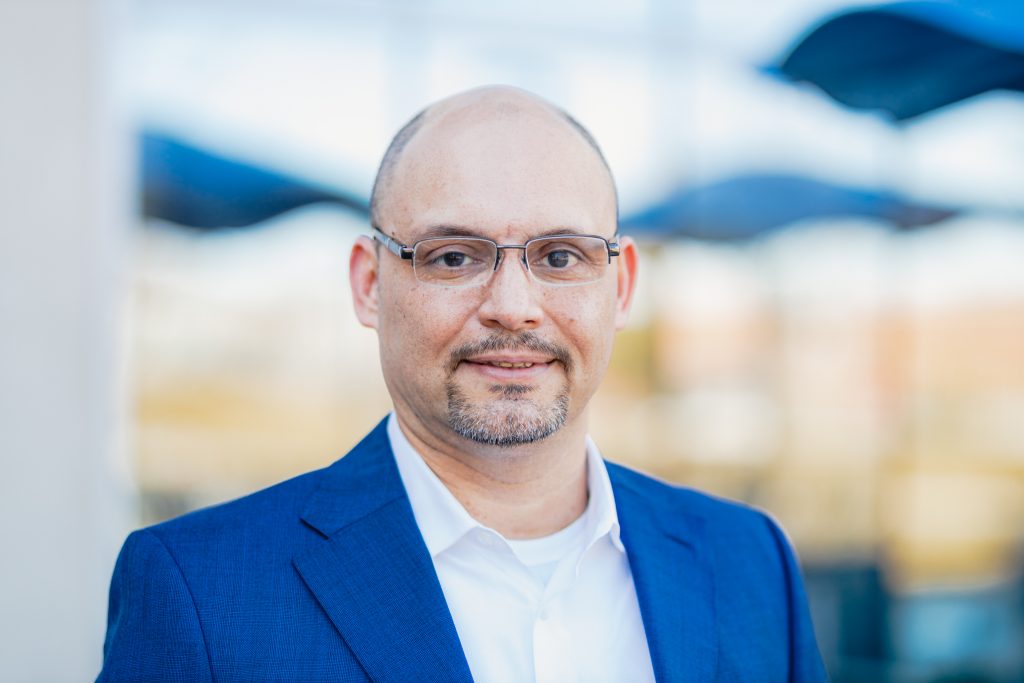
Introducing a project manager
In 2020, Hamilton Health Sciences (HHS), in partnership with Siemens Healthineers, launched a multi-year managed equipment service (MES) project to guide the replacement and renewal of the hospital’s diagnostic imaging technology including X-ray machines, MRIs and CT scanners.
Diego Gomez is the MES project manager. He has been with HHS since 2006, and in his current role since 2011. We spoke with him about this important undertaking, which crosses every HHS hospital site.
What is your role in the MES project?
I work on several turnkey projects where my role is to coordinate with all the teams involved such as clinical teams and end users, HITS, infection control, security, engineering, customer support services, as well as the consultants, contractors and the Siemens teams. In working with all these teams, we look into all the aspects of each project, from early stages (planning and design), through to execution (renovations required within the rooms to accommodate the new DI equipment). I’m also involved in looking at occupancy and ensuring that the new space complies with the requirements requested by the end users. I also monitor the project budget and schedule during the duration of the projects, while keeping in constant communication with all the teams to make sure everything goes as planned.
What was the path that led you to pursue a career in project management?
It seems like my path was clear to me from an early age: as a child who loved to build things with LEGO to developing drafting skills in high school. When it came time to choose a career, I knew what I wanted to do, so I enrolled in a five-year architecture program at the University of San Buenaventura in my native city of Cali, Colombia. My interests were more along the lines of construction than design though, so after obtaining my BA, I took a post degree program in construction administration, which provided me with the fundamentals of construction project management.
What led you from Colombia to Canada?
It was 1999, and the political climate in Colombia was difficult, so my family and I, along with my mom and siblings, looked for a safer place to live. We moved to Florida for a year, and then on encouragement from an uncle who lives in Hamilton, we moved here in 2000, and then became Canadian citizens.
How did you find the pathway to a career in your field in a new country?
I already had a few years of working as a construction coordinator on residential projects in Colombia, but when we moved to Canada, it was difficult for me to find a job in my field since I didn’t have a Canadian diploma. So I did other jobs for a few years. I felt that I was wasting my talent and my skills, so I decided to go back to school and enrolled in the architectural technologist program at Mohawk College in 2004, which included a co-op program. For my first placement, I worked with the engineering department at the Juravinski Hospital. My boss at that time, Daniela Pavlich, motivated me to apply for a planner position in the capital development department, and that was how I became a HHS employee in 2006. I took a couple of courses online and in continuing education in order to complete my program. I obtained my diploma a year after. I worked as a planner for five years and then I became a project manager in 2011.
What is the most challenging part of your work or of the work you do related to MES?
MES projects demand a high level of detail and coordination. The biggest challenges are aligning resources to deliver on each project, and that the conditions in some of our buildings are unforeseeable. We try, as much as possible, to identify potential unknown situations in the early stages of each project so that we can reduce any impacts during construction.
What do you enjoy most about the work that you do?
I have always been fascinated by what diagnostic imaging devices can do, and how technology plays a big role in healthcare. I remember being impacted by a vendor presentation where they showed the beating heart of a baby while still in the mother’s womb. The baby had a heart condition, and using imaging technology, doctors were not only able to identify it, but they fixed it before the baby was born. Being part of these projects makes me feel great because I feel my job has a purpose.
What is the most important takeaway about MES that you think people should know?
Having state-of-the-art equipment provides our clinical teams the tools they require to deliver accurate diagnoses, which will improve the level of service and care our hospitals can offer to our patients and our community.
